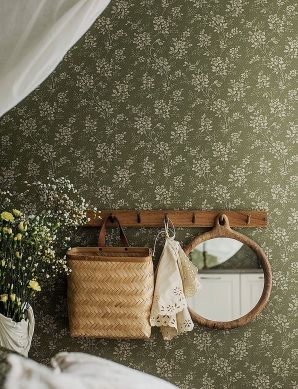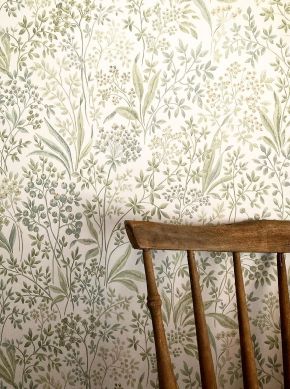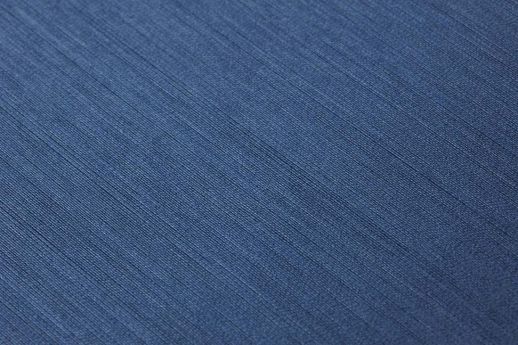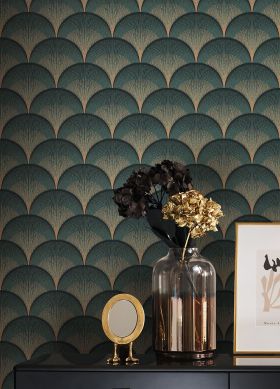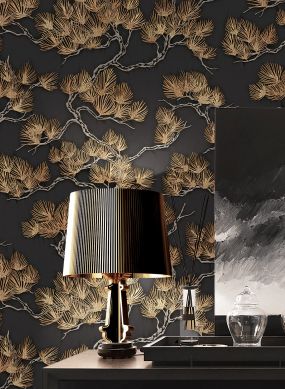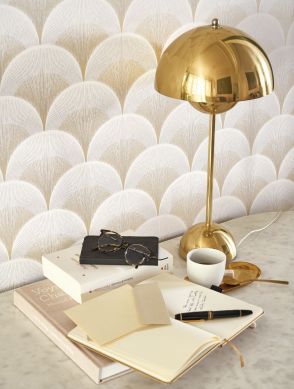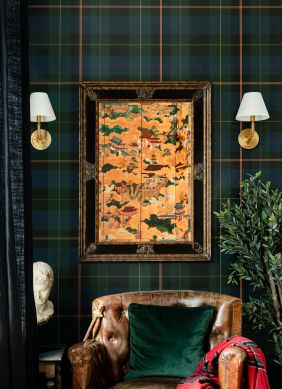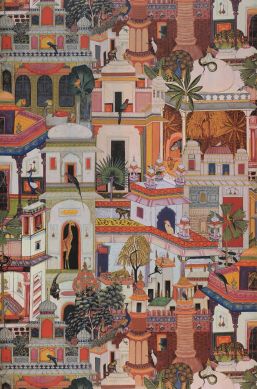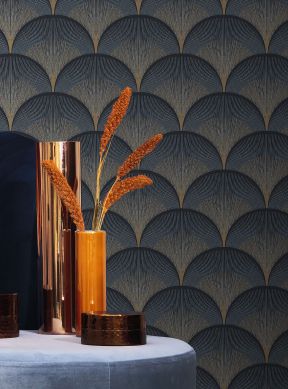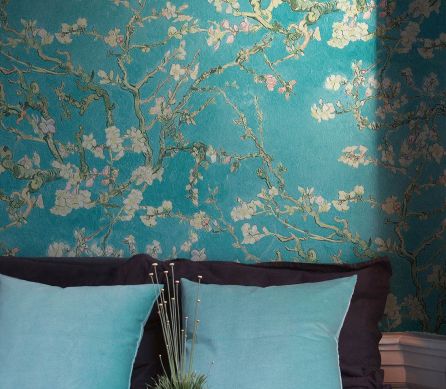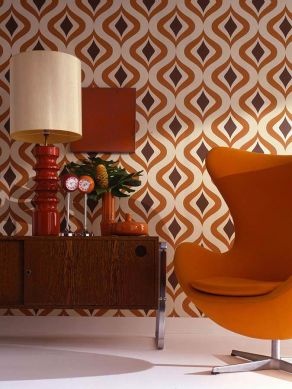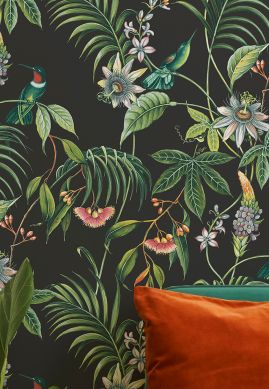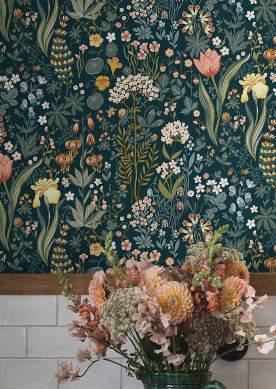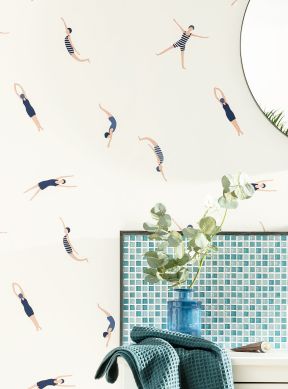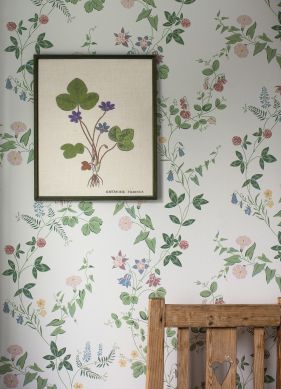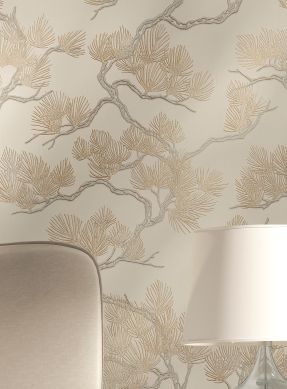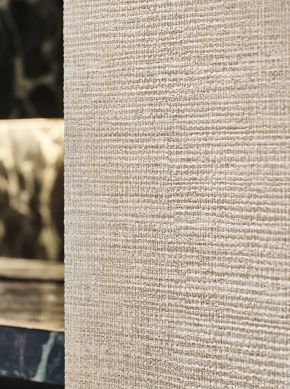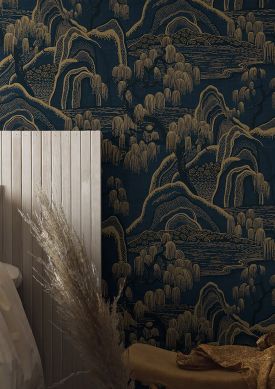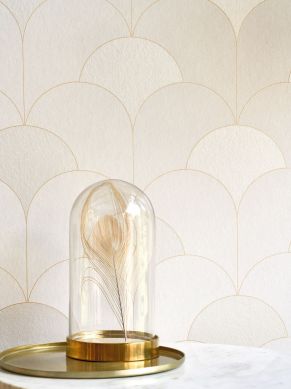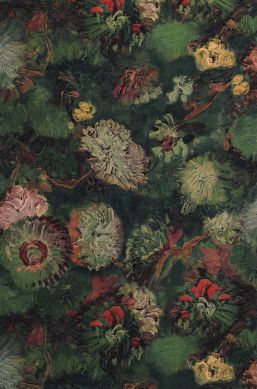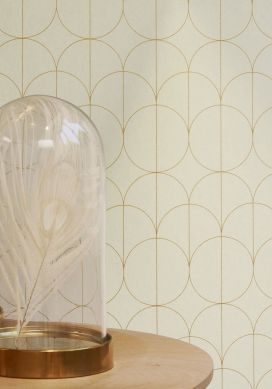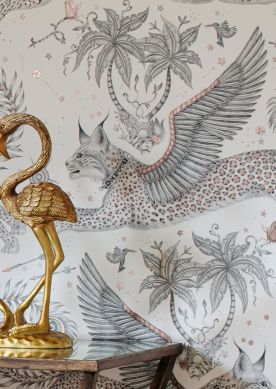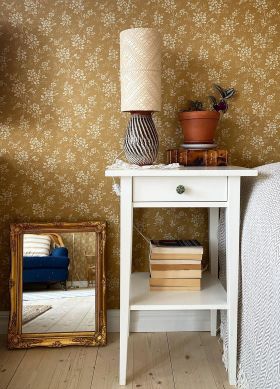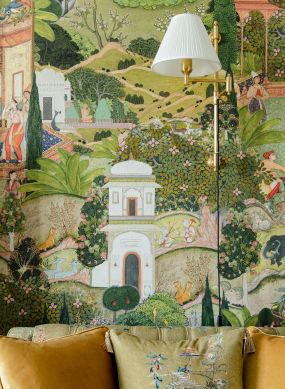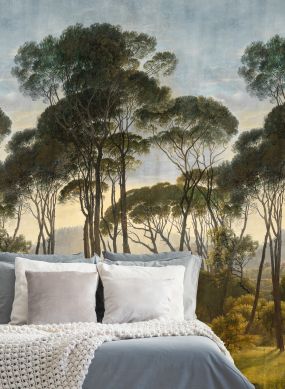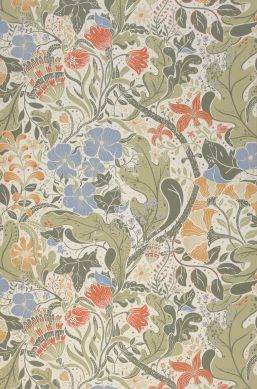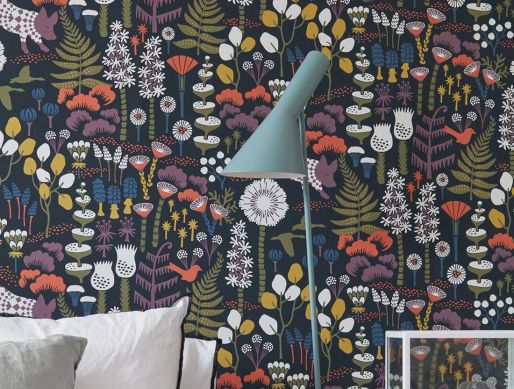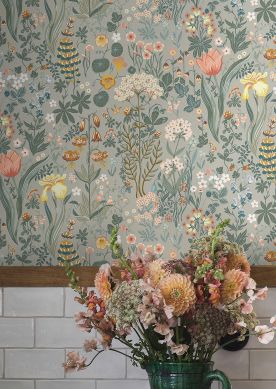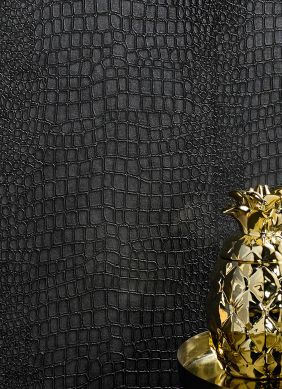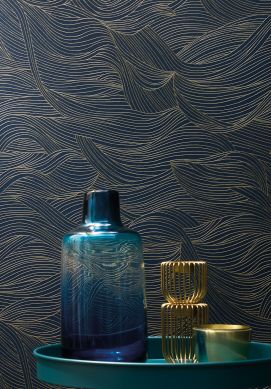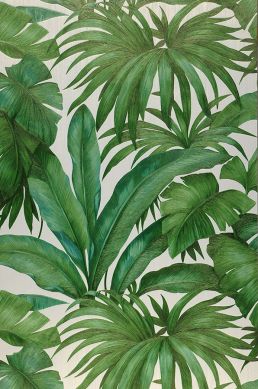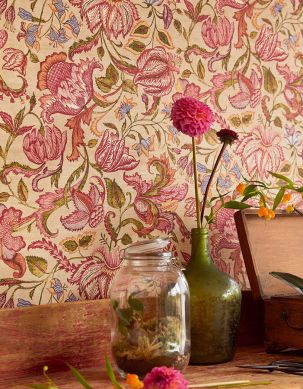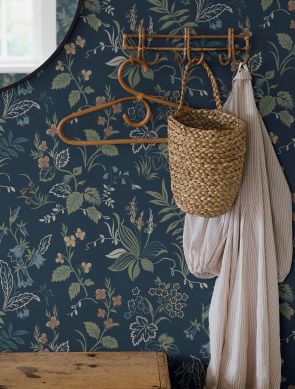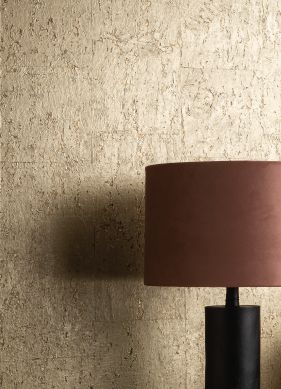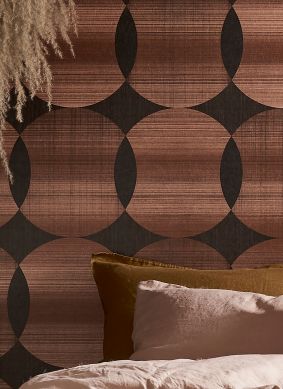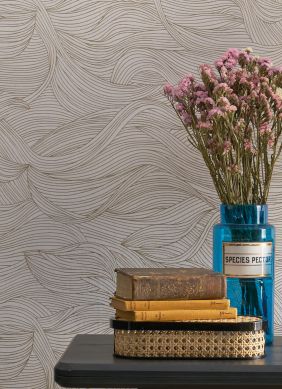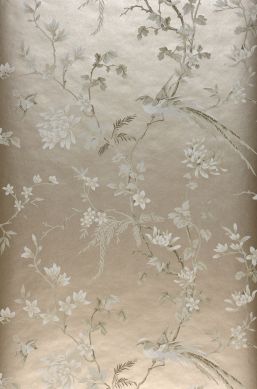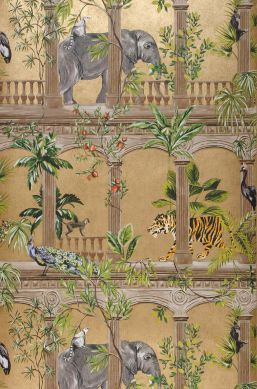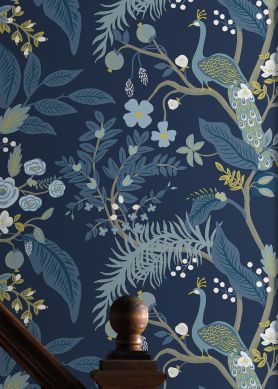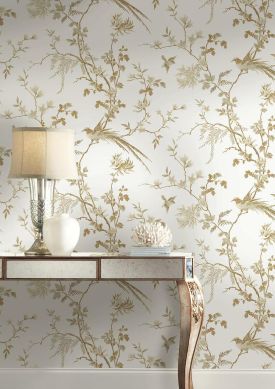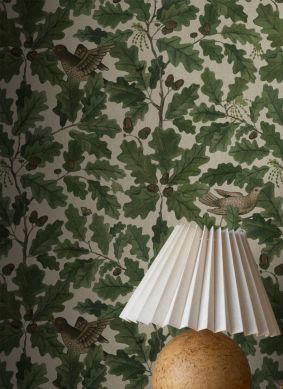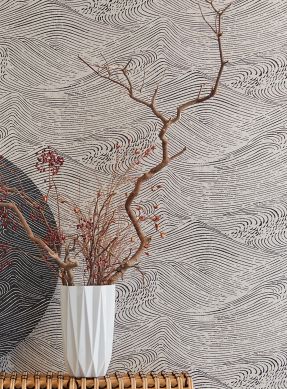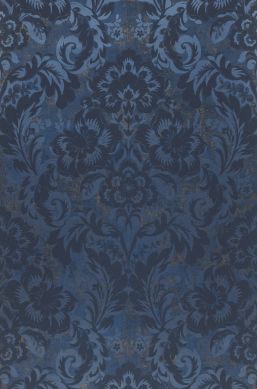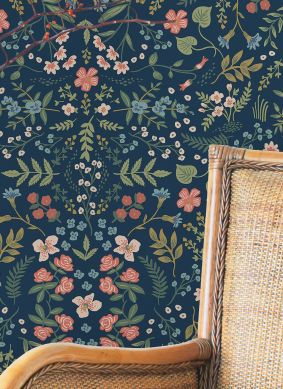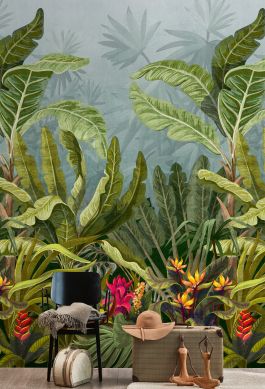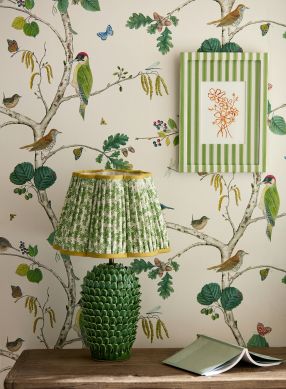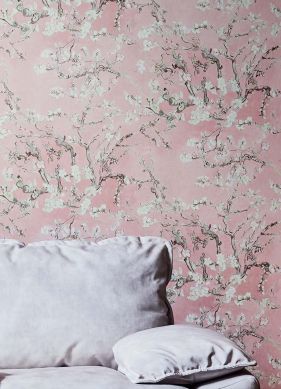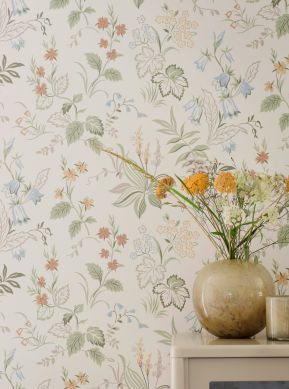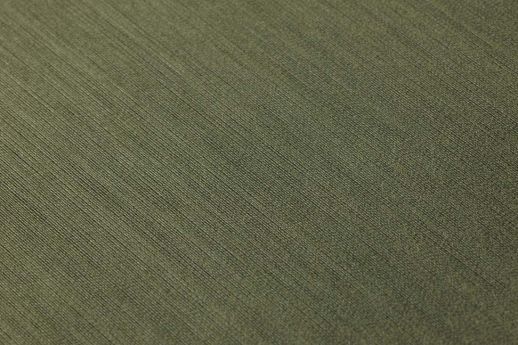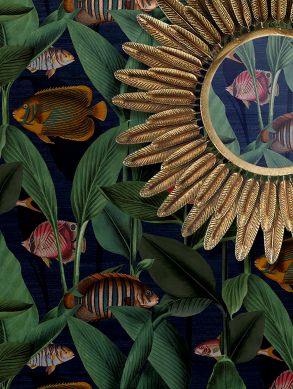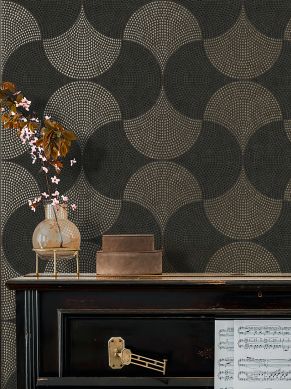Hotel Wallpaper
Hotel Wallpaper: The Guide
Wallpaper provides ambience and atmosphere in your own home, but it is also the perfect décor for any number of different hospitality businesses. Specific style themes or unusual concepts can be translated beautifully with cleverly selected hotel wallpaper models. Our guide will reveal which criteria should be the basis of decorating with design wallpaper, and which special requirements must be met in hotels. In addition, we'll introduce you to a few top-notch ideas which will help you set your accommodation business apart from the mainstream.
Table of Contents
- Which types of hospitality establishments are suitable for wallpaper décor?
- Which target group in which type of guest accommodation is meant to be attracted by the wallpaper décor?
- Which rooms in a hotel can be enhanced with design wall decoration?
- Which business objectives can be supported with specific wallpaper decoration?
- Why is "instagramable" wall décor so important in today's hospitality industry?
- Which are the trendiest colours for wall décor in hotels?
- Which requirements have to be met by wallpapers materials for the hospitality industry?
- Our tips: Ideas for impactful hotel designs
Which types of hospitality establishments are suitable for wallpaper décor?
There is a large array of accommodation varieties, each with their own specification and definition. In hotels, motels, B&Bs, holiday lets, and other accommodation businesses, an individual ambience can make all the difference - and it is easily achieved with the right wallpaper décor.
Hotel
By definition, any hotel has guest rooms or apartments/suites, mostly with en suite bathrooms. A reception area and, more often than not, a restaurant as well as other facilities for guests, e.g. lounge, bar, spa area, can all be part of the service offering. Staff take care of the customers' needs, and daily room cleaning and room service are all part of the operation of a hotel. Hotels come in many different styles and themes. Wallpaper can provide the desired atmosphere for guest rooms, reception, lobby, restaurant, or bar.
Hostel
A hostel is geared towards the needs of independent travellers, backpackers, and travel groups who are looking for affordable accommodation. Hostels usually have a variety of room categories, e.g. single-bed occupancy, double or multi-bed rooms, or dormitories. Rooms are furnished with a focus on functionality. Showers and toilets are often shared, but some single- or double-occupancy rooms might have en suite bathrooms/toilets. There are usually no frills or special services. In some hostels, there might be a cafeteria and/or breakfast facilities. But even though most hostels simply offer functional and inexpensive sleeping accommodation, they are often very modern as well as stylish. When it comes to realising striking hostel ideas, wallpaper is a fantastic tool.
Motel
Motels are accommodation businesses for motorists and lorry drivers, and as such they are usually found along motorways and arterial highways. Their main purpose is to provide inexpensive accommodation. Larger motels might include a small restaurant or café, but these are not standard facilities. Rooms are simple and functional. In France today there are automated motels which don't even have a reception. Design wallpaper can give an edge to a simple motel, providing it with an USP and making it more memorable.
Boarding house
The main differences between a hotel and a boarding house are the number of rooms and the extent of services and facilities. Most boarding houses do not have room for a restaurant, bar, or café. Rooms are often lovingly furnished with a regional touch. Most boarding house are run by their proprietors and feel like a "home from home". Wallpaper can add to this welcoming atmosphere in guest rooms and common areas. Many travellers prefer a boarding house to a hotel, mainly for the comfort and familiarity factors.
Bed and Breakfast
As the name implies, this type of accommodation offers a place to sleep and includes breakfast. Bed and Breakfast rooms are usually simple but comfortable. The ambience is often quite familiar. B&Bs focus on comfortable sleeping arrangements, so furniture and furnishings are usually limited to a bed, bedside table, chest of drawers, and chair(s). Breakfast is taken in the kitchen or breakfast room, or sometimes in the room itself. Home owners who wish to rent out a B&B room can use special wallpaper models to provide that sought-after comfort factor which will make their accommodation known and set it apart from the local competition.
Airbnb
Airbnb started out as an international portal for private accommodation. By now, many commercial providers have also come aboard. Customers don't just rent a bed for the night - it is more akin to a lifestyle. From a room in someone's home to parts of a flat, an entire house or even a boat - anything can be booked for the short or longer term. Some also offer food and/or activities. Tasteful homes away from home which convey a special lifestyle often have more bookings than bog standard places. As a result, wallpaper is a welcome tool to add a certain je ne sais quoi.
Youth Hostel
Youth hostels are the preferred (and very cost-effective) accommodation for (groups of) older children or teenagers with a supervisor. Similar to hostels, there is a variety of room categories, but mainly dormitories. Bathrooms and toilets are usually shared. All meals are taken in dining halls. In addition, there is often a shared lounge, a café, or a bistro, as well as indoor and/or outdoor sports facilities. The range of services offered cannot be compared to that of a hotel. The design of any hostel should appeal to children and teenagers. It should be anything but boring, which is where cool and trendy wallpapers come in.
Guesthouse
The term dates back to the 17th century when patrons from wealthy or aristocratic families did not stay in the host's home but in guesthouses that were built specifically for visitors. Guesthouses tend to be situated in scenic mountain or ocean regions and are superior accommodation options for couples, families, or smaller groups. The range of services is limited, but guests enjoy a a high level of privacy. Guesthouses are often characterised by a welcoming atmosphere, exclusivity, and special architecture. Many boast gardens and pools. The right wallpaper can create stylistic authenticity relating to the era in which the house was built, or reflecting regional identity.
Holiday let
A holiday let (apartment or house) is a great choice for self-catering travellers, couples, families with children, or small groups. Size and facilities can be chosen individually, and the exact type frequently depends on country and architecture. From simple serial construction buildings to exclusive villas or fincas, there are countless possibilities. And the opportunities to use design wallpaper to make guests feel welcome and comfortable are similarly endless. Regional styles and features are just amongst many possible options.
Inn
The main focus of an inn is usually the restaurant. Apart from food and drinks, inns tend to offer a few rooms. Inns are predominantly found in rural or suburban areas or villages. Many of them are characterised by rustic or antique furniture, which greatly benefit from natural materials and wallpaper models in the country house style.
Sanatorium
In a sanatorium, health resort, or wellness clinic, the physical well-being and convalescence of patients is the main focus. These facilities can often be found in climatic health resorts and vary in terms of room capacity and architecture. They usually consist of a reception, lobby, guest/patient rooms, medical treatment and sport facilities, dining halls, perhaps a cafeteria and some shared lounges. The importance of furniture and furnishings for successful recovery and convalescence should not be underestimated. Wallpaper models in health-promoting colours and stimulating patterns create the right atmosphere.
Which target group in which type of guest accommodation is meant to be attracted by the wallpaper décor?
Wallpaper décor should be adapted to the type of accommodation and the target group. The design differences are vast, which is obvious once we consider hotel categories like boutique, business, budget, club, design, holiday, sport, and spa hotels.
Boutique Hotel
Boutique hotels are usually small, owner-operated businesses with individual character and first class service. The focus is on a personal, exclusive ambience and correspondent services. Exceptional design reflecting the preferences and personality of the proprietor(s) is one of the most significant characteristics. Arts, music, and/or event gastronomy are often also integrated in the overall concept. Design wallpaper models are perfect for creative and individual wall décor. In terms of the clientèle, age is immaterial. Families with children, singles, couples, or senior citizens all enjoy a stay in a boutique hotel.
Business Hotel
Business hotels are usually situated in central locations near stations or airports and provide comfortable, premium accommodation for business customers. They are also often found under the names "city hotel", "conference hotel", or "trade fair hotel", depending on the focus. The age of guests tends to be between 25 and 65 years. The interior design - including wallpaper - is stylish and modern, often inspired by art and avant-garde concepts.
Budget Hotel
Budget hotels, e.g. around airports, stations, or motorways, aim to offer low-price accommodation with good service. Furniture and furnishings are simple and functional, but that doesn't mean that the décor is on the cheap side. Au contraire: interesting design, frequently achieved with the help of gorgeous pattern wallpaper, characterises the underlying concept of many budget hotels. Guests are of all ages, but with a large percentage of younger people.
Club Hotel
Club hotels were an invention of the 1970s. They are part of holiday resorts and usually include an all-round service programme for guests. The specific type of a club hotel depends on its target groups and focus, for instance hotels for families with children, couples, adults only, nudists, etc. Generally speaking, club hotels are modern and colourful and equipped to the latest standards; specific design themes can be translated relatively cost-effectively and easily with topical, appropriate pattern wallpaper models.
Design Hotel
Design hotels are not tied to specific star categories. In fact, they are much more characterised by their specific architecture (historical, modern). Usually created by famous architects, designers or artists, the underlying concept alone offers a special experience for guests. A lifestyle hotel of this nature must meet high expectations and is usually based on an individual idea. In terms of authentic wall décor, there is a plethora of stylistic, historic and artistic options.
Holiday Hotel
Holiday hotels are often influenced by the surrounding landscape. Beach hotels, mountain hotels, and rural hotels are just some examples. The concept of taking time out from the daily grind in a relaxing ambience where duties and appointments have no significance should be reflected in furniture and décor. As a result, the wallpaper design is often typical for the region, in a country house style, or closely linked to nature. Holiday hotels are popular with young and old alike, and especially families enjoy staying in this type of establishment.
Sport Hotel
There are sport hotels for any number of types of sports, e.g. golf, horse-riding, tennis, hiking. Furnishings and design are often linked with the specific sport, but also geared towards the age of guests, and/or the region. As a result, there is no such thing as a general wall décor concept for all sport hotels. In terms of wallpaper, anything is possible - from modern to "green" and environmentally friendly, to stylish and/or with historical motifs.
Spa Hotel
Relaxing, enjoying, recuperating, gathering strength, improving one's appearance – all that and more is what guests (who are usually between 30 and 60 years of age) seek in a spa hotel. Beautiful themed wellness oases can be created using floral, nature and wood wallpaper models. Glamorous, opulent, or oriental ambiences can also be realised with design wallpaper.
Which rooms in a hotel can be enhanced with design wall decoration?
There is a whole number of guest areas that can be "upgraded" by gorgeous design wallpaper. Bedrooms and en suites, but also the reception area, the lobby, hallways, bar and restaurant can all be beautified with the right wallpaper.
Bedroom
Design wallpaper models can create a number of themes, ambiences, or colour schemes. These ideas can be realised with glamorous, mysterious, classic, and floral wallpaper styles, to name but a few.
Bathroom
Temple of beauty, ocean landscape, tropical paradise - there are countless options for hotel bathrooms which are more than simply a place of ablution. Pattern wallpaper models can be used on feature walls or large-scale to realise specific themes. Material imitation wallpaper models create an authentic ambience.
Reception
First impressions in the reception area can be the decisive factor as to whether guests like or dislike a hospitality establishment. Sophisticated wallpaper in the reception area can introduce visitors to the general theme of a hotel whilst making them feel welcome and providing a great first impression.
Lobby
The lobby is an extension of the reception area and, as a common area, should reflect the interior design concept of the hotel with memorable visual highlights. Wallpaper in this area can be representative, unusual, and even flashy, as long as they fit in with the overall hotel design.
Hallway
Wallpaper décor in hallways or stairways serves various purposes. It emphasises the concept theme, adds a sense of space and light, and can improve orientation.
Bar
Trendy hangout, Havana lounge, or sophisticated 1920 nightclub - cleverly chosen wallpaper models create a stylish backdrop for hotel bars where night turns into day. Warm or stimulating colours are the first choice for hotel bars.
Restaurant
Thematically, a hotel's restaurant often ties in with the rest of the interior design concept. Wallpaper can create a soft transition and set the scene for culinary delights. In addition, the restaurant can benefit from design wallpaper in terms of marketing potential.
Which business objectives can be supported with specific wallpaper decoration?
Creative wallpaper décor can promote the success of a hospitality business on various levels, for instance customer satisfaction, customer retention, and recommendation rate. Unique concepts often provide a USP in the market.
Differentiation from the competition with unique interior design concepts
Competition within various types of hospitality businesses is fierce. Those that don't manage to set themselves apart can go under fairly swiftly. An elaborate, unique interior design concept which gears towards an experience factor for a certain guest clientèle must include a well thought-through wall décor plan incorporating wallpaper.
Customer satisfaction, customer loyalty and customer retention
When customers feel comfortable because the wallpaper décor effectively creates a gorgeous interior and an enjoyable ambience, customer satisfaction automatically increases. The external factor has a huge impact on the internal reaction. Satisfied customers will be loyal to the house or facility which leads to a long-term increase of the customer base, which in turn secures income.
Recommendation rate on-line and off-line
If a hospitality business is frequently recommended to other potential customers, the foundation for its success is cemented. This might happen the "old-fashioned" way - by word of mouth - but increasingly it's via reviews on booking portals or postings in social media. What remains in the memory of customers is the exceptional, not the humdrum. Interesting wall décor can be a trigger for favourable reviews and recommendations.
Why is "instagramable" wall décor so important in today's hospitality industry?
When a stay in a hotel or holiday flat turns into a positive experience, guests often share their impressions on social media. Unusual wallpaper becomes the chic backdrop for selfies (which are nothing short of free advertising).
Hotel furniture and furnishings should be sufficiently remarkable to get guests talking about the establishment
Whether it is a glamorous Art Nouveau lobby or a bathroom reminiscent of a fascinating underwater world: Design and décor of a hospitality establishment will be the talk of the town if guests experience a memorable time. They will feel like they have entered a new world, a different universe far away from their every-day existence and their usual environment. Intelligent wall decoration which works with emotion and illusion will make guests talk about a hotel.
Wallpaper as a background for selfies = free advertising in social media
An unusual wallpaper is the perfect backdrop for selfies and thus increases social media visibility. The setting will raise questions about the interior design and attract potential guests. Whenever a young target group is focussed on, photographs of happy guests are an immeasurable - and free - marketing tool.
Which are the trendiest colours for wall décor in hotels?
Contemporary wallpaper colours in hotels should be soft, harmonious, and relaxing. Cream, beige, brown, grey, and white as well as shades of blue and green are the most commonly chosen colours right now. In terms of trends, sustainability and ecology are increasingly significant.
Cream
This colour boasts a soft, warm character. It is associated with pleasure, enjoyment and well-being. Similarly to hues like cashmere or champagne, cream fills the room with a calming, sophisticated ambience. Smaller rooms are made to look more spacious, friendly and lighter.
Beige
Beige creates a sense of comfort and has a warm, natural effect. This colour is grounding and calming. When used in hotel wall décor, it triggers feelings of cosiness, security, and well-being. Combined with intensive colours, it provides an appealing tension.
Grey
Grey is considered a neutral colour, and that is exactly the desired impact in hotels. It emphasises other colours effectively. Very dark or light shades of grey have a modern, purist effect. Grey is the ideal partner for any other colour and its inherent sense of understatement lets the eye focus on special materials and structures.
Brown
The colour brown symbolises mother earth, nature, and authenticity. It is warming, improves well-being and awareness, and strengthens the inner self. As a wall colour, brown is a multi-talent which goes well with beige, cream, white, pale blue, apricot, and lilac. Other fabulous partners include pea green, violet, or blue.
White
White is the colour of choice for many modern and purist "Clean Chic" hotels. In the study of colour psychology, clarity, simplicity, luminosity, cleanliness and authenticity are all represented by white. When used as a wall colour, it provides a sense of lightness, space and freshness.
Blue
Summer holidays, an ocean breeze, royal elegance - in its many variations, blue (often in combination with green) guarantees an atmospheric hotel ambience conducive to relaxation and prestige. This cool colour is perfectly suited to bedrooms and bathrooms as well as spa areas, lounges, and bars. Light shades of blue create a sense of space.
Green
The colour of nature and flora opens up the senses and the soul. Green can have an airy, refreshing effect, but depending on the depth of colour and lightness, it can also be amazingly sophisticated. Green wall décor is a guarantee for a good and positive mood. The colour of hope is vitalising and invigorating.
Which requirements have to be met by wallpaper materials for the hospitality industry?
Wallpaper materials in hotels and other hospitality establishments have to meet rigorous requirements. These include fire protection, robustness, cleanability, and hygiene as well as absence of pollutants and sustainability.
Fire safety regulations by building authorities
Wallpapers for hospitality facilities must at least meet the "low flammability" standard and come with a manufacturer certificate complying with the respective national testing standards (e.g. European norm, US norm, etc.). Wallpaper models with the "low flammability" certificate are treated with substances that give them self-extinguishing properties. Fire protection requirements are subject to individual countries' guidelines which need to be adhered to.
Levels of robustness required due to daily change-over of guests
In hospitality businesses, wallpaper needs to sustain demanding conditions - for years and on a daily basis. There is a constant danger of smaller or more extensive damages by guests and staff. Thus, the choice of wallpaper depends on the specific area and its requirements. Vinyl wallpaper models are best suited for demanding conditions, with robust non-woven models a close second. However, due to its more sensitive nature, textile wallpaper should only be used on walls that are not subject to direct contact by guests and/or staff.
Cleaning characteristics and hygiene
"Cleanliness is next to godliness" - especially in hotels! The degree of cleanability determines how intensively a wallpaper model or type can be cleaned, and what agents and tools can be used. In heavily frequented areas, washability is a must. The categories are washable, super-washable, and scrubbable; the latter can be cleaned in the most intense manner. In terms of hygiene, hotel wallpaper is often treated with modern protective coating products which are dust- or dirt-repellent.
Absence of pollutants and sustainability
It is increasingly important that wall décor is free of pollutants. National and international quality certifications provide proof for the absence of pollutants - in some cases, every production stage is included in the certification. In terms of sustainability, certificates listing information regarding the recycling circle provide important reassurance.
Our tips: Ideas for impactful hotel designs
- Beverly Hills Hotel: Premium-quality design wallpaper models with large-scale banana leaves or exotic palm fronds provide a touch of Hollywood flair. White, mint, cream, green, and dusty pink are the preferred hues for this kind of stylish hotel ambience.
- Grand Budapest Hotel: Recreate Wes Anderson's cinematic hotel fantasy with premium-quality textile wallpaper models in dark reds, greens, and browns and wood or marble imitations, classic Art Nouveau or damask patterns. A tasteful combination of wallpaper models is complemented by a funky furniture style mix.
- Mumbai Taj Mahal Hotel: Only the best will do in an exotic and opulent ambience like this, and that includes the wall décor. Shimmering glass beads, crocodile leather imitation, and golden effect foil wallpapers provide an irresistible luxury factor in guest suites, lobby, bar, and restaurant. In terms of colours, saffron yellow, curry red, and warm shades of brown, blue, and green are the best options.
- Ibiza Hotel: Introduce an exuberant (hippie) vibe into your rooms - with a fabulous wallpaper décor in sunshine-and-sea colours. Tie-dye patterns, large abstract flowers, cool geometric vintage designs in the style of the 1970s, and a little dose of Shabby Chic lend a whimsical holiday flair to any hotel.


